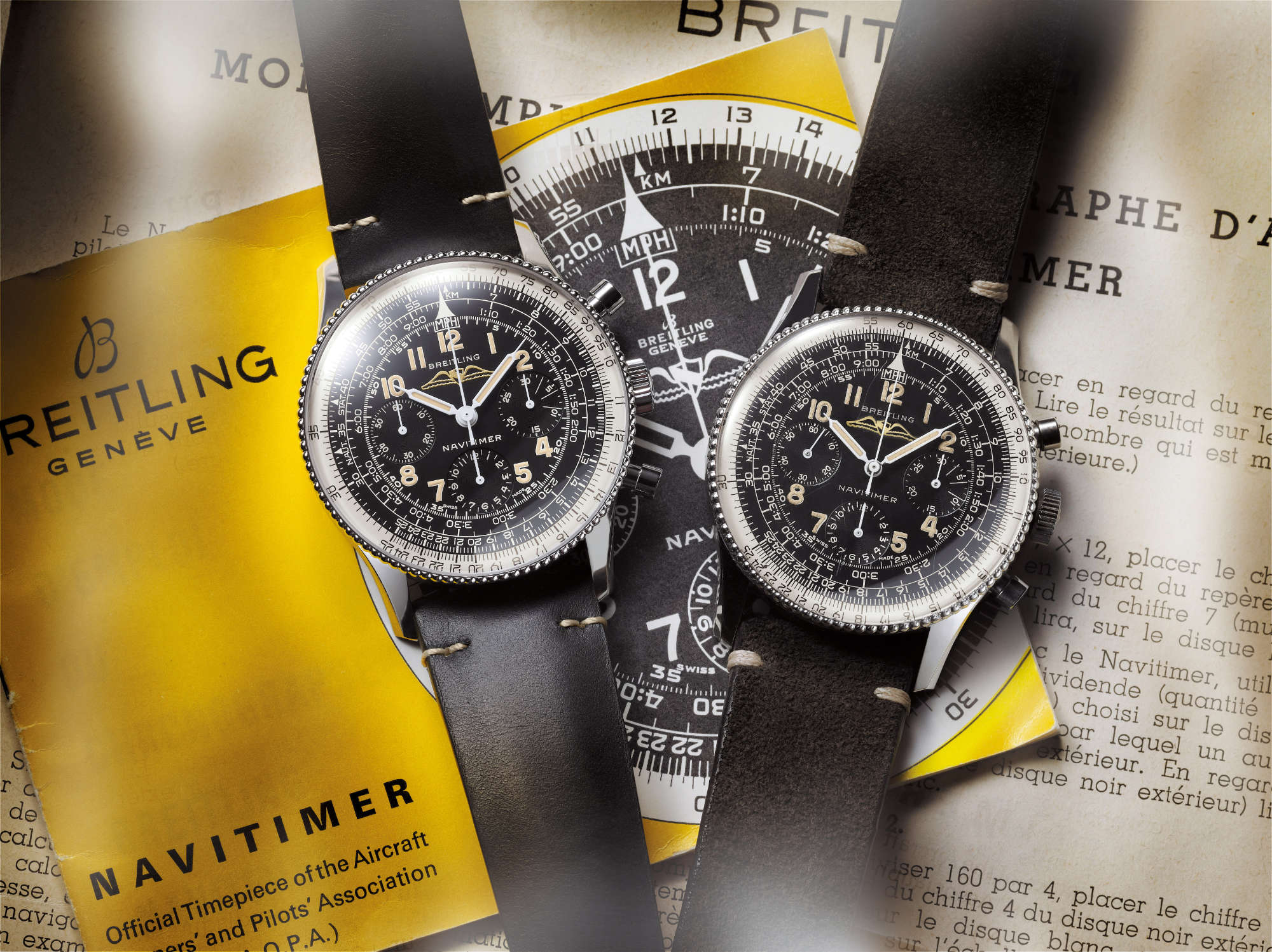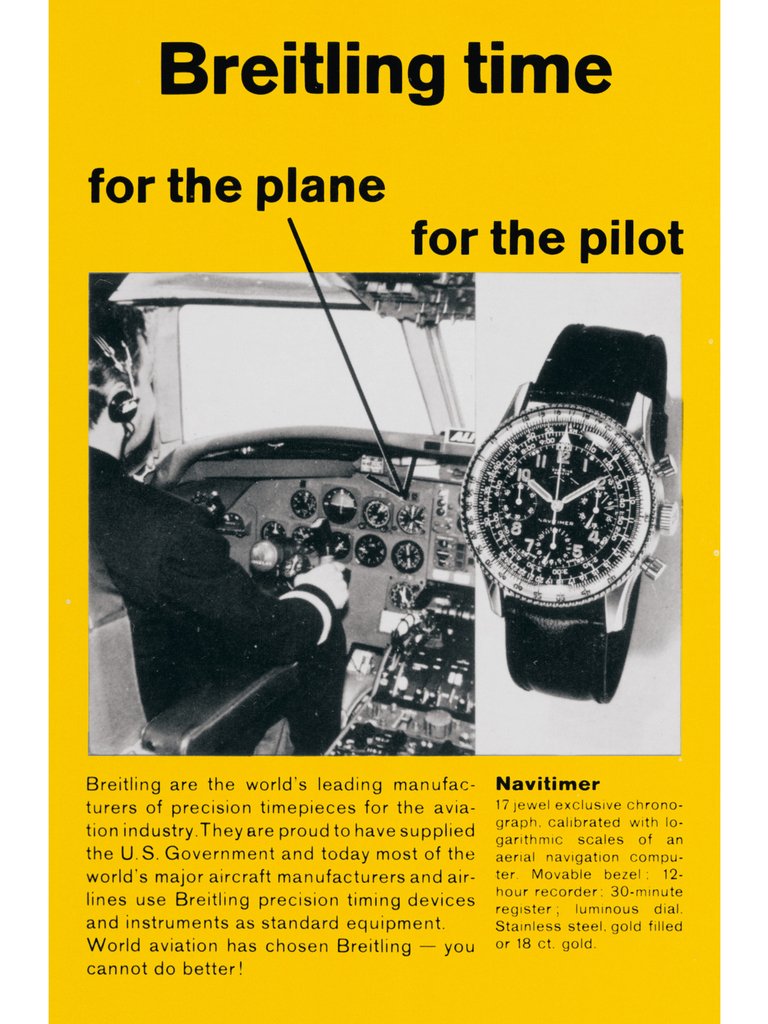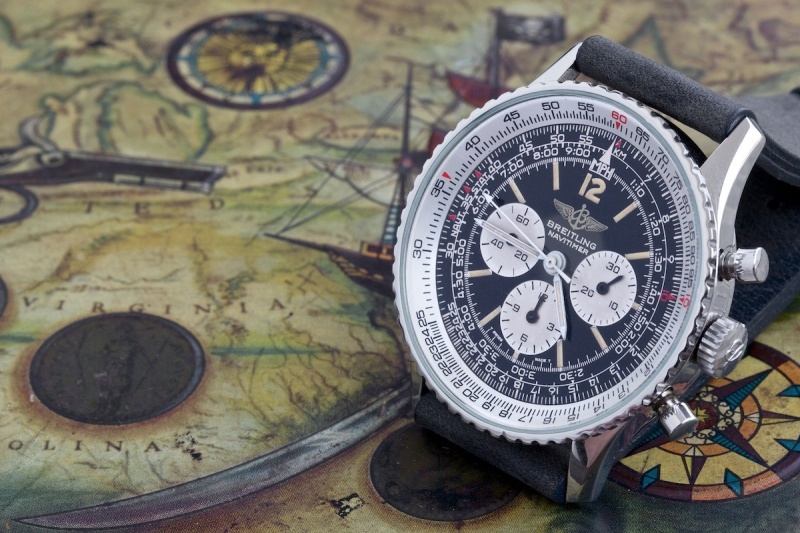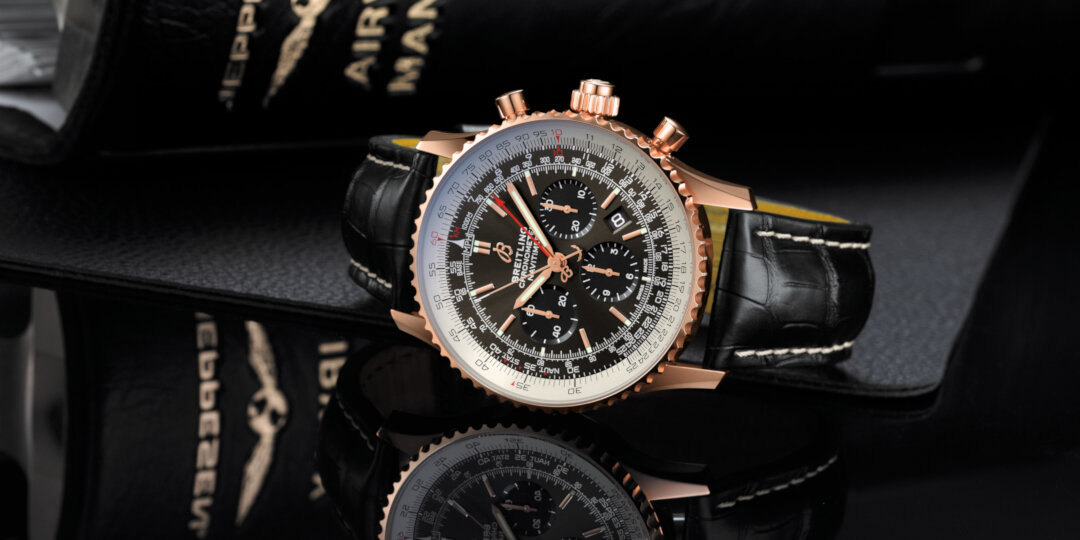Perhaps no wristwatch is still in production is more associated with flight and pilots than the Breitling Navitimer.
Due to its multiple scales and millimeters, the Breitling Navitimer’s dial can be quite perplexing at first glance, posing a challenge to readability.
The Navitimer watch, created in 1952, was a technological breakthrough. Its rotating bezel, slide rule, and timer could calculate distance, flight time, airspeed, and fuel consumption.
This feature, measuring in millimeters, made it a game-changer in the watch industry by addressing the need.
The Navitimer, measuring millimeters, has always been the brand’s flagship watch and has undergone improvements over the years without losing its purpose as a navigational tool.
Its most notable feature is the “navigation computer” – a circular slide rule on the bezel in millimeters. This allows pilots to perform important calculations for flight planning.
The slide rule bezel has been a key part of every Navitimer model, making this watch so popular.
Breitling Navitimer History: The Begining
The Breitling Navitimer, a watch that combines navigation and timing features, was not the first slide-rule watch.
That distinction goes to the Chronomat, released by Breitling in 1942.
The Chronomat served as a precursor to the Navitimer, and it’s understandable for those unfamiliar with the history to mistake it for an early version.
The circular slide rules in both the Chronomat and the Navitimer played a significant role in establishing Breitling as a recognizable brand in the pilot watch industry.
Aircraft Owners & Pilots Association (AOPA)
In the early 1950s, Breitling and the Aircraft Owners & Pilots Association (AOPA) collaborated to create the Navitimer chronograph, a wrist instrument designed specifically for pilots.
Although there is ongoing debate regarding its release date, it was publicly introduced in 1954 (some sources claim it was released in 1952).
The AOPA quickly embraced the Navitimer as its official timepiece, and its endorsement and practicality made it a popular choice among pilots worldwide.

The Valjoux 72 movement powered the earliest versions of Breitling Navitimer watches, but it was later replaced by the Venus 178 in late 1955.
Due to shortages of the Venus movement, some watches from the late 1960s featured Valjoux 7736 movements.
These models were labeled as 806-36 or 806E. In 1968, Breitling introduced the “Big Case” Navitimers, Ref. 816 and 1806, which saw a return to using the Valjoux 72 movement.
These early models were hand-wound calibers as they were created before the development of the self-winding chronograph.
SEE ALSO: 5 Best Luxury Pilot Watches That Epitomize High-Flying Style and Precision
The Navitimer Chrono-Matic Ref. 1806
Breitling introduced the Navitimer Chrono-Matic Ref. 1806 in 1969. This timepiece was part of a collection of self-winding chronographs developed by companies, including Breitling, Heuer, Hamilton, and Buren.
These companies were competing to create the first automatic chronograph, and while the Chrono-Matic beat Zenith’s El Primero by a small margin, it used a modular movement with a micro-rotor, unlike Zenith’s fully integrated rotor.
Seiko also entered the market earlier with its own automatic chronograph.
Breitling Navitimer History: Evolution Of The Navitimer
During the 1970s, Breitling unveiled the first-ever Navitimer reference 7806 model, discreetly displaying the date at 4:30.
According to many enthusiasts, this release marked the end of the original Navitimer era.
However, in the mid-1970s, Breitling expanded the Navitimer line to include quartz versions. These models initially featured LED displays and later transitioned to LCDs.
Despite these changes, the iconic slide rule bezel remained constant across all variations.
This ensured that the watch stayed true to its origins as a reliable tool for pilots.

Different dial versions were produced, with the earliest being black. Some had the AOPA winged logo, while others did not.
Some versions were signed, and others were not. Over time, the dials from this period started featuring the Breitling name, as well as other imprints like “Geneve,” “Navitimer,” and “Cosmonaute.”
In 1963, silvery white sub-dials appeared first, and in 1964, the iconic Breitling logo with twin jets flying together was introduced.
The AOPA logo disappeared from most Navitimer models in 1965, although it continued to be seen on AOPA-exclusive Navitimers until 1969 and on the Cosmonaute until 1979.
The Quartz Crisis Hits Breitling
Breitling encountered a difficult period in 1978 for several reasons.
The owner, Willy Breitling, fell ill, and the Swiss franc inflated. Additionally, the quartz crisis reached a peak.
To overcome these challenges, Willy decided to sell the company. In April 1979, he found a buyer in Ernst Schneider and the Sicura watch firm.
Unfortunately, just one month after the sale was finalized, Willy Breitling passed away. Three months later, the company that bore his name officially closed its doors.
A New Beginning
Breitling Montres S.A., a new company that emerged after the demise of the old one, aimed to revolutionize the brand with electronic advancements.
Ernst Schneider, an engineer and amateur pilot, took charge and wasted no time implementing his grand plans. The release of mechanical timepieces soon followed the introduction of new quartz watches by Breitling.
In 1986, the ref. 81600 model marked the comeback of the Navitimer, which featured a manual-wind Lemania 1872 movement.

In 1988, the Navitimer received an upgrade with the addition of an automatic movement.
When the Breitling assets were sold in 1979, Mr. Helmut Sinn acquired the rights to produce the existing models of Cosmonaute and Navitimer.
However, he was not permitted to use their original names.
Even today, Sinn, a company established in 1961, continues to manufacture a chronograph resembling the iconic Navitimer.
New Movements
In the 1990s, different versions of the Navitimer watch were equipped with Valjoux 7750 and ETA 2892 movements, while the Cosmonaute model used Lemania movements.
The watch’s overall look remained consistent, with its distinctive slide rule bezel and sub-dials positioned at 3:00, 6:00, and 9:00.
However, some models in the 1990s adopted the more common layout of 6-9-12 for the sub-dials, which was found in watches powered by the Valjoux 7750 movement.
In 1993, the water resistance of the Navitimer improved significantly from none to 3 bar.
Minor updates were made to the watch during the 2000s, but it continued to use the modified Valjoux 7750 movement.
In-House Movements
Breitling made a breakthrough in 2009 when unveiled their first-ever in-house movement, the B01.
This innovation became the foundation of the current Navitimer collection. Initially, Breitling boldly claimed that the B01 was the finest chronograph movement globally, but they have since toned down this assertion.
Nevertheless, the development of the B01 marked a significant milestone for Breitling, as it showcased their pioneering expertise in creating an independent and separate reset pusher chronograph.
SEE ALSO: Writing Time: A Comprehensive Guide to Types of Chronographs
The calibre B01 is widely regarded as the perfect movement for Breitling’s most iconic timepieces.
The Navitimer Today
The Navitimer has seen numerous iterations featuring dial colors, straps, bracelets, and case materials.
Venture Capital Investment
Breitling was acquired by CVC Capital Partners in 2017, and Georges Kern became its CEO. Since then, Kern’s leadership has expanded the Navitimer collection.
In addition to the traditional chronograph models, they have introduced non-chronograph time-only watches that challenge the conventional idea of a Navitimer.
The modern Navitimer 01 is reminiscent of the early 806s, while a historically accurate recreation of the 806 was launched in 2019.
This meticulous replica faithfully reproduces the original case size and the number of beads on its bezel.

The vintage 806 models of the Breitling Navitimer hold a special place for both enthusiasts and pilots.
Whether flying a plane or working at a desk, these watches satisfy your cravings. However, we shouldn’t overlook any version of this iconic timepiece.
It gave birth to a new genre, the wrist instrument, and significantly developed pilot’s and tool watches.
While some argue that wristwatches are outdated, the Navitimer defies this notion and continues to improve over time.
